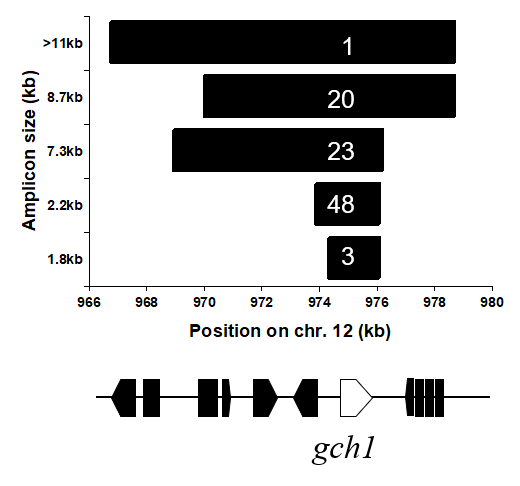If copy number variants (CNVs) are predominantly deleterious, we would expect them to be more efficiently purged from populations with a large effective population size (Ne) than from populations with a small Ne. Malaria parasites (Plasmodium falciparum) provide an excellent organism to examine this prediction, because this protozoan shows a broad spectrum of population structures within a single species, with large, stable, outbred populations in Africa, small unstable inbred populations in South America and with intermediate population characteristics in South East Asia. We characterized 122 single-clone parasites, without prior laboratory culture, from malaria-infected patients in seven countries in Africa, South East Asia and South America using a high-density single-nucleotide polymorphism/CNV microarray. We scored 134 high-confidence CNVs across the parasite exome, including 33 deletions and 102 amplifications, which ranged in size from <500 bp to 59 kb, as well as 10,107 flanking, biallelic single-nucleotide polymorphisms. Overall, CNVs were rare, small, and skewed toward low frequency variants, consistent with the deleterious model. Relative to African and South East Asian populations, CNVs were significantly more common in South America, showed significantly less skew in allele frequencies, and were significantly larger. On this background of low frequency CNV, we also identified several high-frequency CNVs under putative positive selection using an FST outlier analysis. These included known adaptive CNVs containing rh2b and pfmdr1, and several other CNVs (e.g., DNA helicase and three conserved proteins) that require further investigation. Our data are consistent with a significant impact of genetic structure on CNV burden in an important human pathogen.

